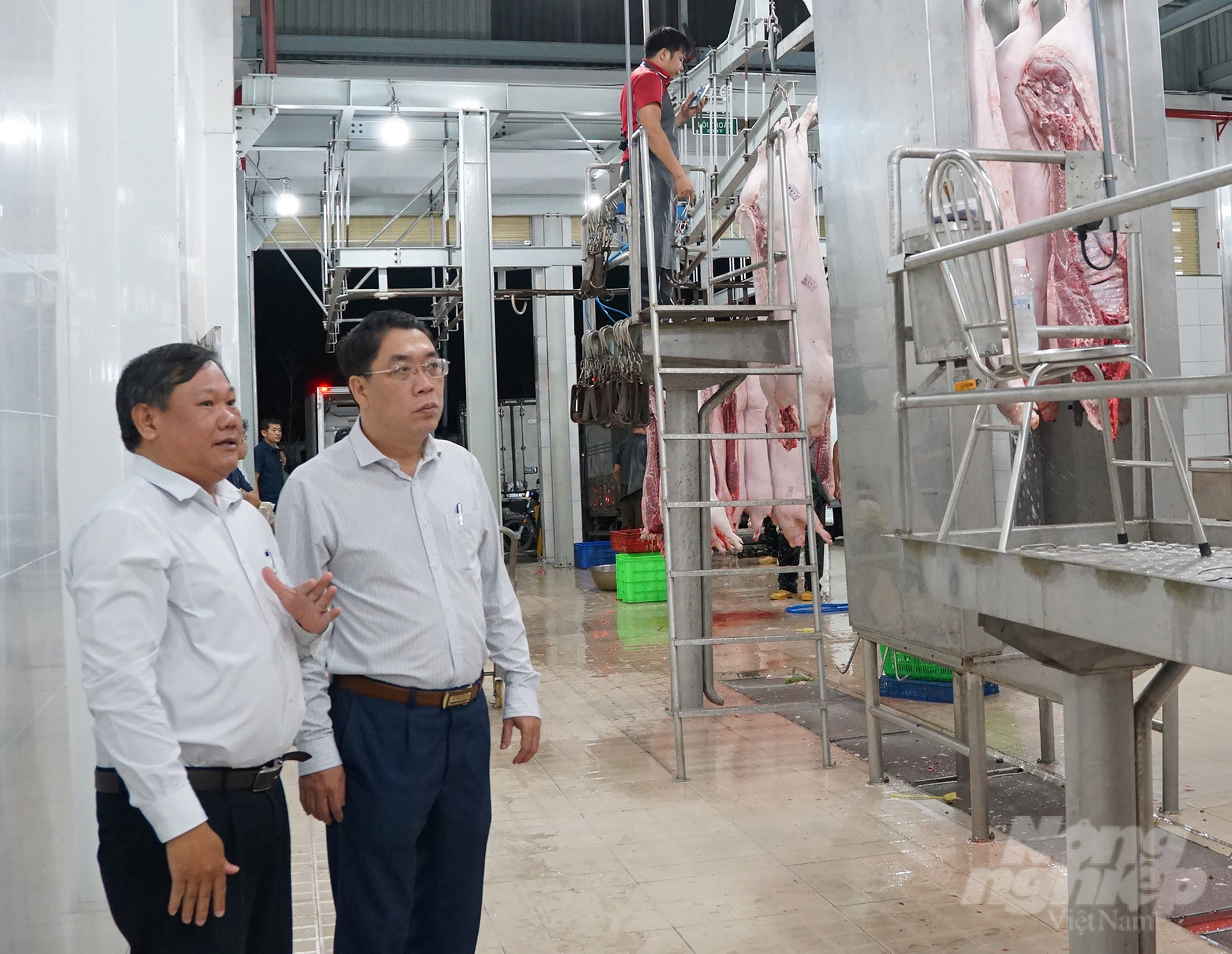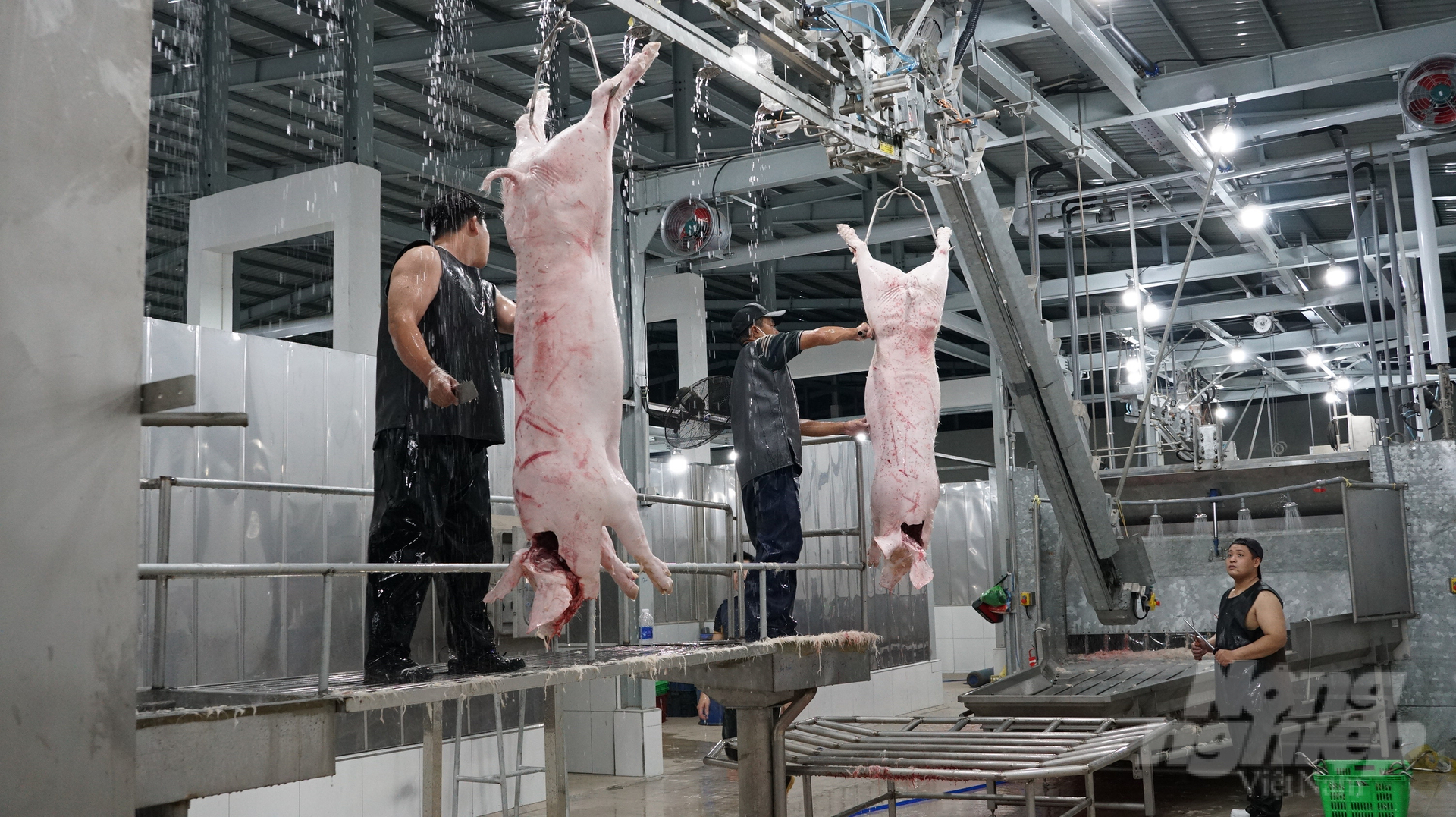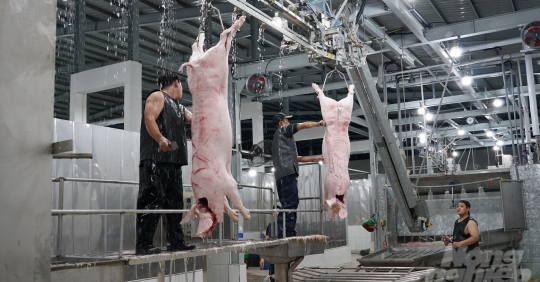
Mr. Dinh Minh Hiep, Director of the Ministry of Agriculture and Rural Development of Ho Chi Minh City, made the briefing at the press conference. Picture: Nguyen Thuy.
Regarding the control of livestock and poultry slaughter in the city, Mr. Dinh Minh Hiep, director of the Ministry of Agriculture and Rural Development of Ho Chi Minh City, informed that the decision of the People’s Committee of Ho Chi Minh City to be implemented by March 31 to stop operating manual cattle slaughterhouses in Ho Chi Minh City From April 1st, slaughter will be carried out at industrial cattle slaughterhouses in the area.
For example, as of April 1, eight manual cattle slaughter plants and areas in the city have ceased operations, including Binh Tan Center Slaughterhouse (Binh Tan District); Slaughterhouse Phuoc Kien (Nha Be District); Slaughterhouses of Tan Phu Trung, Hoa Phu, Phu Hoa Dong, Tan Thanh Dong, Xuyen A (Cu Chi District) and the manual slaughter area of Hoc Mon Food Processing Joint Stock Company (Hoc Mon District).
In particular, the Trung Tuyen slaughterhouse (Can Gio district) continues to operate, slaughtering an average of 20 to 30 pigs per day, according to Decision No. 231/QD-UBND, to meet the consumption needs of the Can Gio district population.
Mr. Hiep added that currently in Ho Chi Minh City there are 5 cattle slaughterhouses operating on industrial slaughter lines in Cu Chi, Hoc Mon and Binh Thanh districts and 1 slaughterhouse in Can Gio district, with an average total slaughtering capacity From April 1 to June 8, it is about 5,200 to 6,000 pieces/day, which accounts for about 60% of the total pork supply in the city market.
Specifically, there are three industrial cattle slaughterhouses in Cu Chi District, including Loc An Cattle Slaughterhouse of Loc An Food Company Limited with an average slaughtering capacity of 900 to 1,000 animals/day; up about 20% compared to before April 1st. The planned capacity of this factory is now 2,000 pieces/day.
Saigon Agriculture Corporation – One Member Limited (Sagri) cattle slaughtering and food processing factory currently has an average slaughtering capacity of 50-80 heads/day; an increase of about 45% compared to before April 1st. The planned capacity is now 2,000 heads/day.
A Ha cattle slaughtering and food processing factory of An Ha Service Co., Ltd currently has an average slaughtering capacity of 1,900 to 2,300 head per day; up about 8% compared to before April 1st. The planned capacity of this factory is 3,200 heads/day.
In Hoc Mon District, Hoc Mon Food Processing Joint Stock Company’s Xuan Thoi Thuong cattle slaughterhouse currently has an average slaughtering capacity of 1,900 to 2,100 head per day; reduced by about 6% compared to the number of slaughters of factory #2 and the manual slaughter area of the factory before April 1st. The design capacity is 2,000 heads/day/plant.
In Binh Thanh district, Vietnam Livestock Industry Joint Stock Company (Vissan) cattle slaughterhouse reached an average slaughtering capacity of 400-500 heads per day; corresponds to the previous slaughter volume of this company. The design capacity is 1,000 fish/day.

Heads of Ministry of Agriculture and Rural Development of Ho Chi Minh City inspect An Ha Service Co., Ltd.’s An Ha Beef Slaughterhouse and Food Processing Plant. Picture: Nguyen Thuy.
Regarding the overall supply of pork to the city market, Mr. Dinh Minh Hiep said there has been negligible fluctuation compared to the period before April 1, which is relatively stable, with an average production of about 9,500 to 10,000 pigs per day.
As a result, the amount of pigs slaughtered in the city decreased by about 700-1,200 head/day (a decrease of about 10-15%). The reason is that some livestock farmers move to Long An, Binh Duong for slaughter and then ship them back to Ho Chi Minh City or go to some kind of meat shop and don’t buy live pigs for slaughter.
At the same time, the amount of pork brought into the city from the provinces for consumption increased by about 500–1,300 heads (an increase of about 15–20%) during this period.

An Ha Service Co., Ltd. Ha Beef Slaughtering and Food Processing Factory is designed for a capacity of 3,200 animals per day. Picture: Nguyen Thuy.
Mr. Hiep added that the Ministry of Agriculture and Rural Development held an “animal slaughter control conference on the implementation of Prime Minister’s Directive No. 02/CT-TTg” on June 3 in Hanoi. Ms Nguyen Thu Thuy, deputy director of the Ministry of Animal Health, said that Ho Chi Minh City, Ha Tinh, Long An and Thua Thien Hue municipalities are well able to organize concentrated and large-scale animal slaughter activities and ensure food safety and traceability easy to control if needed, Ba Ria – Vung Tau…
“These are Ho Chi Minh City’s efforts over the past decade in converting from manual slaughterhouses to industrial slaughterhouses. Ho Chi Minh City is the only entity in the country that has switched entirely to industrial slaughterhouses. Industrial slaughter,” said Ho Chi Minh City Ministry of Agriculture and Rural Development director Dinh Minh Hiep.
In general, the control of slaughter in industrial cattle slaughterhouses in Ho Chi Minh City strictly ensures the veterinary hygiene control conditions…
“The slaughter quantities in industrial cattle slaughterhouses are stable. However, the industrial cattle slaughterhouses in the city have not yet reached the planned capacity, provided that further partners are found. For industrial cattle slaughter, factories will increase capacity according to planning and planning will ensure the supply of hot pork to meet the needs of consumers in the city,” said the director of the Ministry of Agriculture and Rural Development Ho -Chi Minh City.
According to Mr. Hiep, during the recent transition, Ho Chi Minh City’s Livestock Production and Veterinary Medicine Subdepartment (Ho Chi Minh City’s Department of Agriculture and Rural Development) has also stepped up inspection and verification of the slaughter of livestock and poultry . Handicrafts in the area particularly in District 12, Go Vap, Binh Chanh but no cases have been detected.

